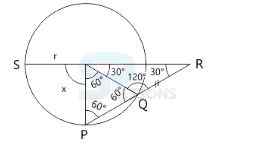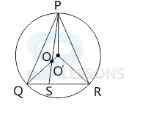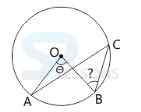 Introduction
Introduction
UPSC releases a recruitment drive for the selection of NDA and NA. UPSC NDA and NA Prelims exam is the combination of sections like Mathematics and General Ability. UPSC NDA and NA Prelims Practice Test presents the most regular questions related to Mathematics and General Ability sections. UPSC NDA and NA Prelims Practice Test is very useful to crack the Prelims exam sections like Mathematics and General Ability.
 Pattern
Pattern
| Paper Mode | Subject | Marks | Duration |
|---|---|---|---|
| Paper-I | Mathematics | 200 Marks | 2 hours |
| Paper-II | General Ability | 200 Marks | 2 hours |
 Samples
Samples
1. “Matrimandir” is located in:
-
A. Pondicherry
B. Chennai
C. Panaji
D. Hyderabad
-
A. Shuddhādvaita
B. Achintya Bhedābheda
C. Purnādvaita or Integral Advaita
D. Modern Vedānta
-
A. Leh
B. Lahaul & Spiti
C. Sri Nagar
D. Mithankot (Pakistan)
-
A. Goa
B. Andaman & Nicobar Islands
C. Lakshadweep
D. Tamil Nadu
-
A. Ganesh Vasudev Mavalanka
B. R. K. Shanmukham Chetty
C. Vitthal Bhai Patel
D. Govind Ballabh Pant
-
A. Niacin
B. Pyridoxine
C. Cobalamine
D. Thiamine
-
A. Cow
B. Buffalo
C. Sheep
D. Goat
-
A. Swine Flu
B. Malaria
C. Cancer
D. AIDS
-
A. Hargobind Khorana
B. Barbara McClintock
C. Theodor O. Diener
D. Joseph L. Goldstein
-
A. Several issues raising
B. in the meeting could
C. be amicably resolved
D. due to his tactful handling.
-
A. love:elevates
B. film:flam
C. fib:lie
D. fake:ordinary
-
A. To gain prominence
B. To praise oneself
C. To confess without of reserve
D. To destroy before it blooms
-
A. film began
B. film had begun
C. beginning of the film was over
D. film begins
-
A. Connoisseur
B. Amateur
C. Professional
D. Dilettante
-
A. Defeatist
B. Sycophant
C. Truant
D. Martinet
1. The angles of a triangle are (x + 5)°, (2x – 3)° and (3x + 4)°. The value of x is
-
A. 30
B. 31
C. 29
D. 28
-
A. 1
B. 2
C. 3
D. 68
-
A. 1
B. 0
C. 2 cos θ
D. 2 sin θ
-
A. -1
B. 0
C. 1
D. [latex]\frac{3}{2}[/latex]
-
A. 64 : 65
B. 129 : 137
C. 27 : 29
D. 127 : 137
-
A. 40°
B. 70°
C. 90°
D. 60°
-
A. 45°
B. 35°
C. 60°
D. 75°
-
A. 44°
B. 66°
C. 67°
D. 78.5°
-
A. inside the triangle
B. outside the triangle
C. on the midpoint of hypotenous
D. on one vertex
-
A. 60°
B. 45°
C. 30°
D. 75°
-
A. [latex]\frac{103}{216}[/latex]
B. [latex]\frac{103}{208}[/latex]
C. [latex]\frac{103}{108}[/latex]
D. [latex]\frac{36}{103}[/latex]
-
A. [latex]\frac{336}{176}[/latex]
B. [latex]\frac{128}{429}[/latex]
C. [latex]\frac{113}{176}[/latex]
D. [latex]\frac{336}{2197}[/latex]
-
A. [latex]\frac{336}{2197}[/latex]
B. [latex]\frac{512}{2197}[/latex]
C. [latex]\frac{40}{2197}[/latex]
D. [latex]\frac{57}{91}[/latex]
-
A. [latex]\frac{5}{136}[/latex]
B. [latex]\frac{1}{136}[/latex]
C. [latex]\frac{15}{136}[/latex]
D. [latex]\frac{8}{15}[/latex]
-
A. [latex]\frac{2}{7}[/latex]
B. [latex]\frac{8}{21}[/latex]
C. [latex]\frac{3}{14}[/latex]
D. [latex]\frac{5}{21}[/latex]








